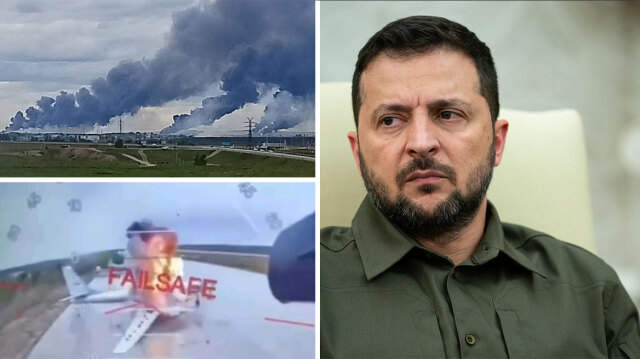Ukraine, after enduring a prolonged period of setbacks on both the battlefield and in diplomacy—coupled with ongoing pressure from its primary ally, the United States—now appears to be mounting a counteroffensive.
The nature of Ukraine’s recent strikes against Russian targets, especially the successful targeting of bombers responsible for attacks in Kyiv, is significant. At the center of this communication is Vladimir Putin. The attack on the Crimean bridge marks the third such strike since the war began, signaling that President Volodymyr Zelensky may be pivoting away from U.S. directives, carving his own path forward, whether independently or in collaboration with willing partners.
Furthermore, the Ukrainian forces have not only targeted the bridge linking the Russian mainland to the annexed Crimean peninsula but have also provided evidence that substantiates the success of their operation. This suggests they possess the capability and intelligence to execute their objectives effectively.
If the “spider’s web” of attacks extends up to 4,000 kilometers from Ukraine’s borders to regions such as Siberia, today’s assault on the Crimean bridge raises substantial questions about Russia’s preparedness and the integrity of its defenses.
Ukraine, determined to follow through on long-planned strategies, is executing these operations with little regard for potential Russian retaliation. Notably, Ukraine appears to have moved past the shock of American policy shifts and sidelined any attempts by Trump to mediate a resolution.
For Russia, which continues to face significant challenges from Ukrainian forces, the messages emanating from Kyiv do not seem to translate into concrete changes. Following each Ukrainian success, the Kremlin resorts to investigations, purges of high-ranking military officials, and internal reorganizations—steps that do not alter the larger outcomes or Russia’s vulnerability to Ukrainian intelligence operations.
However, Ukraine’s recent actions suggest a deeper evolution. Two years ago, Zelensky’s announcements and the influx of military support from allies yielded minimal impact on the battlefield. The previously touted counteroffensive resulted in setbacks for Kyiv.
Since then, both Kyiv and Zelensky, along with new military leadership, seem to have absorbed the harsh lessons from their experience. Today, with significant investments in technology and intelligence, Ukraine is achieving outcomes reminiscent of notable intelligence operations, such as those of Israel’s services in recent months.
Kyiv is quietly establishing a new operational framework that promises longevity. Meanwhile, Washington’s ability to exert unilateral pressure on Ukraine seems constrained, and Trump may face difficulties if he follows through on the prospect of a U.S. withdrawal. Regardless, the intricate strategies developed over the past months signal just the beginning of a new phase in the Russian-Ukrainian conflict.
Ask me anything
Explore related questions

















